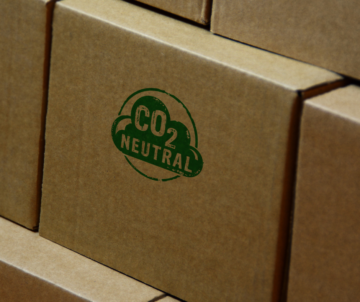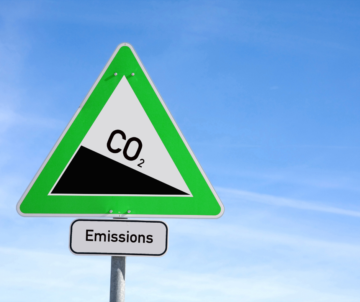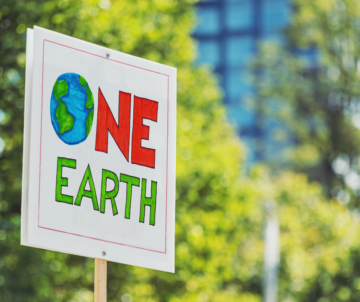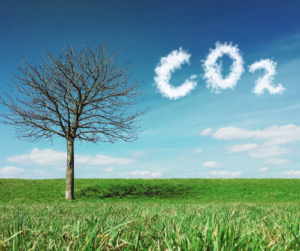
Reducing Corporate Carbon Emissions
In late June, the U.S. Supreme Court ruled to restrict the EPA’s power to regulate carbon emissions, including mandating emission reductions. This is just the latest evidence that we cannot rely on government mandates to fight the climate crisis. Even in less politically fraught times than today, mandates will never work in the United States. Harnessing the power of market forces is the only way we will be able to reverse climate change—and that starts with the consumer.
In a free market economy, the consumer has the power. Once consumers know the carbon footprint of products, market forces will be more powerful in initiating change than any mandate, even from regulatory agencies.
Just look at the food industry. When food manufacturers were required to list nutritional information on packaging, especially in recent years as label requirements were updated to make the information clearer and more accurate, it changed how people ate. According to a report in the American Journal of Preventive Medicine, consumers “reduced the intake of calories by 6.6 percent, total fat by 10.6 percent, and other generally unhealthy choices by 13 percent. They also increased vegetable intake by 13.5 percent.” In response, food companies on average reduced the amount of sodium in their products by 8 percent and the amount of harmful trans fat by 64 percent.[1]
Nutrition labels on food are effective because consumers generally have a basic knowledge of what is healthy or unhealthy. They know too many calories or too much fat or sodium is unhealthy. They know vitamins and protein are healthy. A consumer doesn’t need a degree in nutrition or food science to make a healthier choice. They just need to look at that easy-to-read-and-understand nutrition label. Furthermore, when consumers make the healthier choice, it leads food companies to produce healthier products–no government mandate is needed.
The fact is, most consumers want to make an environmentally conscious choice. However, they don’t usually have sufficient information to do that quickly and easily. With a Carbon Factor Index Label, consumers will have that information at a moment’s glance. Just as a consumer can look at a food product and immediately see how healthy it is, a consumer can look at a product and immediately know how green it is. They can easily consider carbon footprint as an attribute alongside attributes like cost and quality. In turn, this makes it easier to make an environmentally conscious choice.
Knowledge is power. Just as consumers made the healthier choice when they had access to that information, consumers will be inclined to choose the product they know is better for the environment.
Just as healthier foods had a competitive advantage when that information was readily available, products that have a smaller carbon footprint will have a clear competitive advantage.
And just as this consumer power drove food companies to create healthier products, consumer power will drive manufacturers and businesses to make their operations and products closer to carbon neutral. Thus, maintaining their competitive advantage. As manufacturers and businesses create more low-emission and carbon-neutral products, greenhouse gas emissions will be reduced faster and in greater amounts than any government regulation or mandate could.
When a consumer makes a choice based on a favorable carbon-neutral standing, they participate in the process of reducing corporate carbon emissions. Thereby, reducing greenhouse gas emissions worldwide.
[1] Dariush Mozaffarian and Siyi Shangguan, “Do Food and Menu Nutrition Labels Influence Consumer or Industry Behavior?” STAT (blog), February 19, 2019, https://www.statnews.com/2019/02/19/food-menu-nutrition-labels-influence-behavior/.
- SEO Powered Content & PR Distribution. Get Amplified Today.
- Platoblockchain. Web3 Metaverse Intelligence. Knowledge Amplified. Access Here.
- Source: https://frankdalene.com/knowledge-is-power-the-consumers-role-in-reducing-corporate-carbon-emissions/
- 1
- 10
- 2019
- a
- Able
- access
- According
- accurate
- ADvantage
- agencies
- alongside
- amount
- amounts
- and
- attributes
- available
- average
- based
- basic
- because
- Better
- Blog
- businesses
- cannot
- carbon
- carbon emissions
- change
- choice
- choices
- Choose
- clear
- Climate
- climate crisis
- closer
- Companies
- competitive
- conscious
- Consider
- consumer
- Consumers
- Corporate
- Cost
- could
- Court
- create
- crisis
- Degree
- Doesn’t
- Dont
- drive
- easier
- easily
- economy
- Effective
- emission
- Emissions
- Environment
- environmentally
- especially
- Even
- evidence
- faster
- Fat
- fight
- food
- foods
- Footprint
- Forces
- Free
- from
- Furthermore
- GAS
- generally
- Glance
- Government
- greater
- Green
- harmful
- Harnessing
- healthier
- healthy
- How
- However
- HTTPS
- immediately
- in
- Inclined
- Including
- increased
- index
- industry
- influence
- information
- IT
- journal
- Know
- knowledge
- Label
- Labels
- Late
- latest
- Leads
- List
- Look
- made
- make
- MAKES
- mandate
- mandates
- Manufacturers
- many
- Market
- market forces
- Menu
- more
- most
- Need
- Neutral
- Operations
- Other
- packaging
- participate
- People
- percent
- plato
- Plato Data Intelligence
- PlatoData
- politically
- power
- powerful
- process
- produce
- Product
- Products
- Protein
- quality
- quickly
- recent
- Reduced
- reducing
- Regulate
- Regulation
- regulatory
- report
- required
- Requirements
- response
- restrict
- reverse
- Role
- Science
- smaller
- starts
- States
- sufficient
- Supreme
- Supreme Court
- The
- the information
- their
- thereby
- times
- to
- today
- too
- Total
- TURN
- u.s.
- United
- United States
- updated
- usually
- What
- What is
- will
- Work
- worldwide
- years
- zephyrnet












